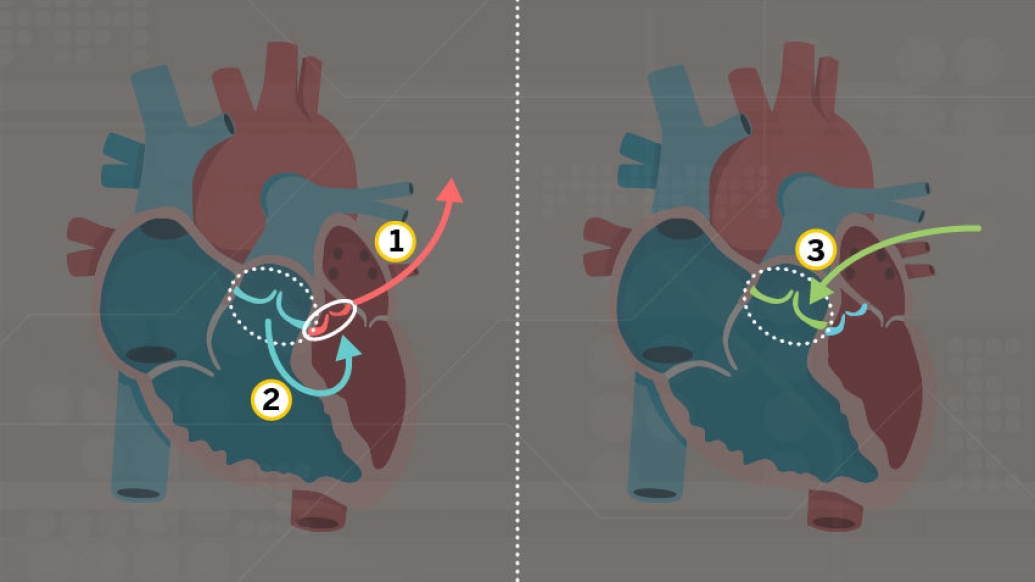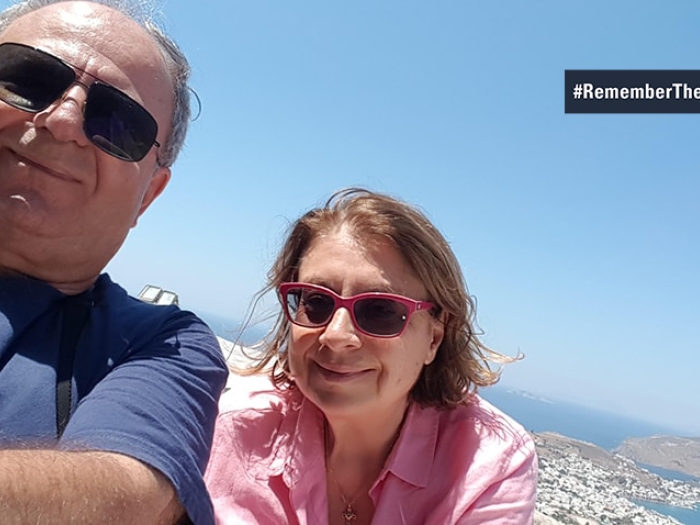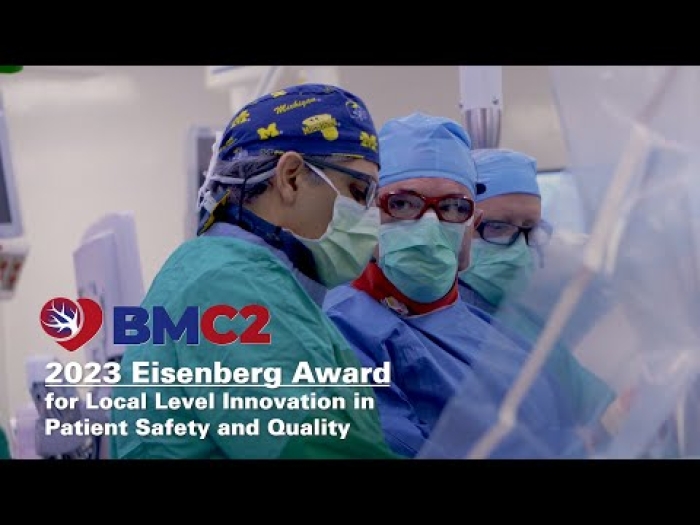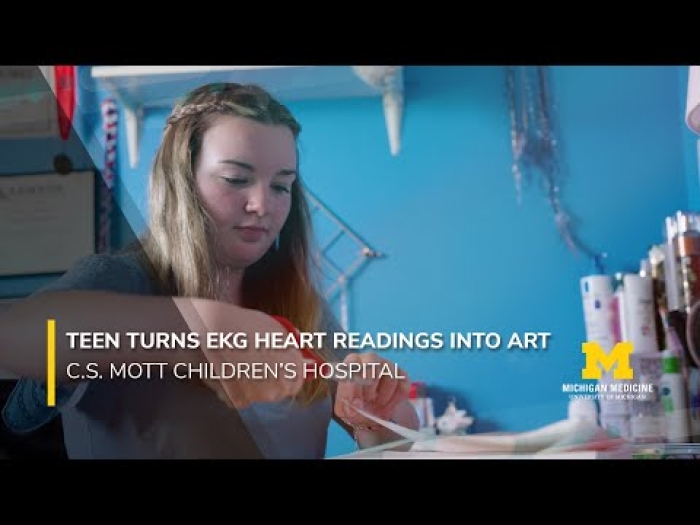One woman shares her experience with the Ross procedure, an aortic valve replacement surgery performed by only a few cardiac surgeons in the country.
10:35 AM
Author |

As a teacher at Madonna University in Livonia, Michigan, Anne McLeod, R.N., D.N.P., was able to let her nursing students hear the sound of a heart murmur in real time. The murmur was her own, caused by bicuspid aortic valve (BAV) disease, a genetic condition in which the aortic valve has only two functioning leaflets versus the three leaflets of a normal aortic valve.
But, thanks to a surgery rarely performed on adults known as the Ross procedure, those days are over.
During the Ross open heart surgical procedure, the diseased aortic valve is removed and replaced with the patient's biologic pulmonary valve. A second pulmonary valve, typically a homograft (human tissue) valve or occasionally an animal tissue valve, is then attached to function as a new pulmonary valve.
While tissue valves last approximately 10-15 years before needing to be replaced, the Ross procedure can extend the need for future aortic valve replacement surgeries typically by 20 years or longer. That's because a patient's own valve is more compatible than a tissue valve and less likely to deteriorate as quickly.
Watching and waiting
McLeod's aortic stenosis, diagnosed eight years ago, developed over time as a result of having been born with a bicuspid aortic valve. Over time, the valve's leaflets can thicken, a condition known as aortic stenosis. When this happens, the heart is forced to pump harder than usual to get blood through the valve. A BAV may function adequately for years without causing symptoms, often until mid-life. In addition to aortic stenosis, this two-leaflet valve can cause complications such as an aortic aneurysm, something McLeod had also been diagnosed with.
As is common in patients with aortic stenosis and aortic aneurysms, McLeod was monitored on a regular basis over the years to evaluate her condition and determine timing for surgery.
It wasn't a case of if the 53-year-old would need surgery, but when.
"My doctor wanted to keep an eye on my condition, especially my aneurysm, which could dissect," the Livonia, Michigan, resident says. "The goal was to perform surgery when my symptoms became severe. Until then, they would keep a close eye on me."
Making the connection
While McLeod was fully aware of her health issues, she would never have known about the Ross procedure if it hadn't been for a chance encounter with Shinichi Fukuhara, M.D., a Michigan Medicine cardiac surgeon who was preparing to perform surgery on McLeod's sister, Teri, in September 2019. Teri had also been diagnosed with aortic stenosis, pointing to a genetic condition shared by the two women.
"Terri introduced me to Dr. Fukuhara and said, 'This is my sister – she's next,'" McLeod recalls.
When Fukuhara learned about McLeod's aortic stenosis and bicuspid aortic valve, he arranged to send her information about the Ross procedure, identifying her as a potential candidate for a type of open heart valve surgery that would put her on a patient survival curve identical to that of a healthy individual.
MORE FROM MICHIGAN: Sign up for our weekly newsletter
When determining eligibility for the Ross procedure, age is a key factor as the surgery is typically performed on patients under the age of 55 whose life expectancy is 15 years or more. McLeod's sister was 58 at the time of her valve replacement, one of several factors that prevented her from being a candidate for the procedure.
Other considerations include the patient's type of aortic valve disease and overall health as well as the quality of their pulmonary valve and whether other heart procedures are necessary, says Fukuhara. "If a patient is a candidate for this procedure, we still give them all treatment options. Many of them choose Ross."
Approximately 65% of those on whom Fukuhara performs the Ross procedure have had past surgical aortic valve replacements in which a tissue valve was used to replace their aortic valve and are now in need of a re-do procedure.
Time for surgery
Through the years, McLeod says, "I felt fatigued and sometimes short of breath, but chalked it up to either aging or menopause." In retrospect, however, she says she never really felt good. "My heart was compensating for the valve disease and it was getting weaker and weaker." By November 2019, McLeod was experiencing more and more symptoms as her condition became severe.
After considering her treatment options, McLeod selected the Ross procedure. "I didn't want to have an open heart procedure every 10 years. That meant I would likely need two more heart surgeries."
With her decision made, she says, "Dr. Fukuhara and his team let me know it was time for surgery."
"The patient's heart muscle had become very thick to overcome valve disease," Fukuhara says. "Her heart was working much harder than it should have been.
"The surgery went very well with no major complications," says Fukuhara, who successfully replaced McLeod's aortic valve with her pulmonary valve, surrounding it with a reinforcing graft to prevent dilation of the valve. This measure helps prevent an aortic root aneurysm, a key risk of the procedure. McLeod's ascending aortic aneurysm was also repaired during surgery.
"The Ross procedure is a technically highly demanding procedure performed by only a handful of adult cardiac surgeons in the United States," says Fukuhara. "But it has so many benefits, not only the known avoidance of blood thinners and the longevity of the valve, but also the excellent valve performance and resistance to infection."
McLeod's pulmonary valve, made from human tissue, will likely need to be replaced in 20 years, says Fukuhara, but that will require a procedure known as transcatheter pulmonary valve replacement. This minimally invasive procedure can be performed through a needle stick in the groin versus another open heart surgery. As the transcatheter pulmonary valve procedure essentially involves the vein and right side of the heart, there is no risk of stroke.
"This is another hidden benefit of the Ross Procedure compared with a tissue aortic valve and transcatheter aortic valve replacement where a 2 or 3% of stoke risk always exists," says Fukuhara.
Spreading the word
Today, nearly four months post-surgery, McLeod is committed to interval training and cardiac rehab to get her heart as strong as possible. "I'm working to be the best I can be. I keep pushing to see how far I can go."
Still, she knows her limits. "I'm restricted from lifting anything over 25 pounds due to my repaired aneurysm."
She's also back to work at the University of Michigan School of Nursing full time and will be teaching at Madonna University next semester. "I feel 1,000% better," she says.
A consummate educator, McLeod wants others to know about the Ross procedure. "When I talk about the procedure to people, they often know someone who might benefit from it," she says. "It will give you 20 more years without surgery because they're using your actual valve, not a tissue valve, to replace your aortic valve. And when you need surgery, it can be done using the transcatheter approach. I didn't want to go through open heart surgery again."
Fukuhara, too, wants to spread the word about the Ross procedure. "When evaluating patients and presenting the different treatment options to them, if we can avoid blood thinners and any surgical intervention in the future, the Ross procedure is ideal."
Like Podcasts? Add the Michigan Medicine News Break to your Alexa-enabled device or subscribe for daily updates on iTunes, Google Play and Stitcher.

Explore a variety of healthcare news & stories by visiting the Health Lab home page for more articles.

Department of Communication at Michigan Medicine
Want top health & research news weekly? Sign up for Health Lab’s newsletters today!





